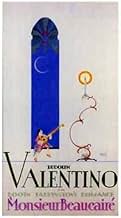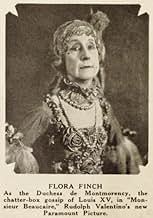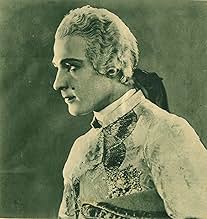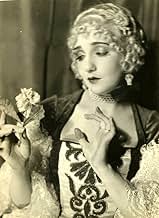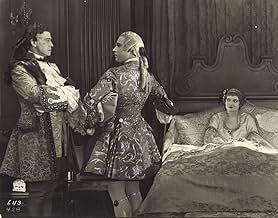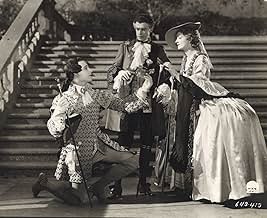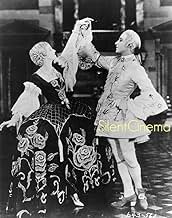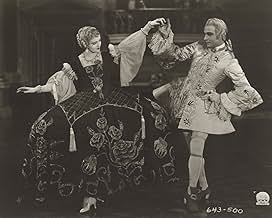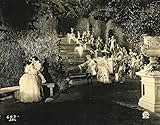Aggiungi una trama nella tua linguaWhen M. Beaucaire, a handsome barber, catches the Duke of Winterset cheating at gambling, Beaucaire exacts Winterset's cooperation in sneaking Beaucaire into a great ball, disguised as the D... Leggi tuttoWhen M. Beaucaire, a handsome barber, catches the Duke of Winterset cheating at gambling, Beaucaire exacts Winterset's cooperation in sneaking Beaucaire into a great ball, disguised as the Duke de Chartres, and to introduce him to the beautiful Lady Mary. The disguised barber suc... Leggi tuttoWhen M. Beaucaire, a handsome barber, catches the Duke of Winterset cheating at gambling, Beaucaire exacts Winterset's cooperation in sneaking Beaucaire into a great ball, disguised as the Duke de Chartres, and to introduce him to the beautiful Lady Mary. The disguised barber successfully pulls off the masquerade and is soon the toast of society. But Winterset is embi... Leggi tutto
- Regia
- Sceneggiatura
- Star
- Premi
- 3 vittorie totali
Recensioni in evidenza
On the brighter side, cinematographer Harry Fischbeck does a nice job of imbuing the sets with the right amount of light & shadow. Not knowing if the scenes were originally tinted & toned, the b/w LOC print was superb with constant projection speed indicating the film was probably photographed at 24 fps. It's fortunate that a marvelous print survives to showcase Fischbeck's efforts. Valentino, powder puff or not, is amusing & subdued in a costume picture that really isn't way over his head. He displays a nice bit of tongue & cheek wonderfully pantomimed by the actor. A really good scene, and one repeated on television, has Valentino leaping over a balcony with sword at his side into the darkness. One can see why documentists would use that scene because it is well done. Other scenes are photographed so crisp and in closeup that lip readers can have a field day 'hearing' what the actors are saying. Indeed Olcott improved in close-ups more here than he had in LONY but Beaucaire is still pedestrian and wont come alive. Legend has it that Natacha Rambova, Valentino's wife, interferred with direction on this film and caused trouble all during the shooting but Olcott's vane directing style is in evidence throughout. Booth Tarkington's novel is a historical-costume-comedy-drama that delves away from the usual slice of Americana he usually put out such as THE MAGNIFICENT AMBERSONS. Valentino fans will have no problem seeing their hero in royal powdered attire. His pleasant appeal still comes through despite Olcott. Valentino will give a similar devil may care performance a year later in THE EAGLE directed by Clarence Brown. Brown, like Vidor & Crosland, was one of a new crop of directors who were soon to adapt the moving camera and almost make it an unassuming character within the story it was filming. Lastly Monsieur Beaucaire has all the right productions(A-List), excellent photography, and probably a decent musical score when it debuted but Sidney Olcott's static is ingrained in the picture. With another newer younger director this picture could've moved and consequently could've ended up being better remembered if not a late silent classic.
Director Sidney Olcott was a film pioneer whose directing career dated back to 1907. His best remembered work is From the Manger to the Cross, a film on the life of Christ which was produced in Palestine in 1912 near the original locations. That early feature survives and holds up remarkably well today, but it appears that by the mid-1920s Olcott's cinematic skill was falling behind that of more innovative directors. Unfortunately, Monsieur Beaucaire looks stodgy and old-fashioned compared to concurrent works by rising talents such as Ernst Lubitsch. (Lubitsch had already demonstrated by this time that costume pictures can be stylish, sexy and fun.) Olcott makes a rather half-hearted attempt to be 'modern' in his staging of the first sword-fight sequence, when he limits the camera's viewpoint to a bystander's facial reaction while showing only the tips of the fighter's swords in the foreground, but the effect is gimmicky and unsatisfying: we don't want tricky camera angles, we want to see what's happening! The second fight sequence is a considerable improvement, and also reveals that, fancy duds notwithstanding, Valentino could handle swordplay. During this second sequence Olcott breaks down the fourth wall for a moment as Rudy lunges directly at the camera. Otherwise, however, the directorial approach is uninspired.
Perhaps the biggest problem here is clutter: there are too many title cards, the cards themselves are too wordy, and too many supporting characters are introduced who have little or nothing to do with the central plot. For all the unnecessary embellishments the story is a fairly straightforward one: Valentino is the Duke of Chartres, a member of the King's court and a royal favorite. He's interested in Princess Henriette (Bebe Daniels), but she's put off by his reputation and his closeness to the King's mistress. After defying a direct order from the King to marry Henriette, the Duke finds it expedient to flee the court for England. In Bath he assumes the identity of a humble barber. He becomes intrigued with Lady Mary, the Belle of Bath (Doris Kenyon), but she's put off by his lowly status. (It's always something!) Eventually, he returns to the French court and to Henriette, newly appreciative that she loves him for himself. That's the gist of it, but the screenwriters who adapted Tarkington's novel failed to streamline the story for the requirements of silent cinema, and Olcott lacked Lubitsch's facility for conveying plot points with witty visual ideas. The first section in the French court is especially draggy, but the tempo improves once Rudy reaches England and assumes his barber disguise. Eventually the story becomes more engaging, but over all the film falls short of the cinematic treat it could have been.
Valentino carries the proceedings with his undeniable charisma, but the numerous supporting players have little to do except pose in their fancy costumes; even such estimable talents as Bebe Daniels and Lowell Sherman are reduced to brief moments, while other characters register only as dress extras. It's a particular shame that Bebe's character is so relentlessly serious, since she had such a gift for comedy, and more humor would have given this production a boost. Monsieur Beaucaire has never had a very high reputation among silent film buffs, in part perhaps because it compares poorly to the two costume dramas Rudy made in the last year of his life, The Eagle and The Son of the Shiek, both of which were crafted with so much more flair and playful humor. Interestingly, when Monsieur Beaucaire itself was remade in the 1940s it was reworked as an outright comedy, and Valentino's role was assigned to the most unlikely successor imaginable: Bob Hope!
This is a really good film, but it's direction by Sidney Olcott is far too rooted in trying to capture the mannerisms of good manners of the time of Louis XV of France (1710-1774). As a result, the film drags in many places, especially at the beginning. Also, the character development is very lopsided, and in some cases doesn't get done. Either that, or a lot of cutting was done to make the finished product from what was originally there. Lowell Sherman plays Louis XV, and of course he's excellent, but his part is barely there. His queen is Lois Wilson, and she's perhaps in four scenes, if that. The part of Bebe Daniels - the important female of the piece - begins with great importance and ends with great importance, but during the large middle is not even there... The best female in the piece is Doris Kenyon. For a while, I thought she was going to be the end love of Rudy, but, no, that couldn't be, shouldn't be - and wasn't... The entire film, however, IS centered around Valentino. He's actually quite good. He plays the Prince Bourbon, Duke de Chartres who, due to circumstances, pretends to be a barber. He practices his skills at such while fleeing France and "hiding" in England. People have jested when he shaves himself rather than letting someone else do the trick. In his class nobody male shaves himself! Anyway, throw in the many loves and affairs, including Madame Pompadour, and you've got a pretty good story. The film is sumptuous, though it is VERY stage bound in its sets, causing it to be somewhat claustrophobic. It also uses far too many iris shots, causing it to be even more claustrophobic. Plus, the lighting is such that the lights follow the characters in the action, but many times allow all surroundings to be rather dark. The film, frankly, is too dark overall. Still, the costuming and sumptuousness of all the rest is lovely.
Overall, I have very mixed feelings about this one. I loved it from the second half onward to the end. I almost didn't want to get into the piece at the beginning, though. Stay with it and you'll be pleased by the end. Valentino and all the actors and actresses are quite good. The faults of the film aren't theirs. Yes, it's worth your time now that you've been pre-prepared...
Certainly the director could have led the story/play by Booth Tarkington through better contrived scenes where the actors portrayed more interesting situations. Often, they stood in position as if asking "What comes next" They may have well just butted their heads together. It was out of whack in a way hard to describe.
Might another director pulled it off? Maybe. Nazamova knew how to weave a story before your eyes. (I am thinking of Camille) I feel the male actors held up their end of the action. The women were insipid. Valentino was very good. Three cheers, he brought it off. I liked the movie despite my criticism.
Lo sapevi?
- QuizBebe Daniels later recalled that the cast was required to recite all their dialog in French.
- ConnessioniFeatured in Cieli azzurri (1946)
I più visti
Dettagli
Botteghino
- Lordo Stati Uniti e Canada
- 556.826 USD
- Tempo di esecuzione1 ora 46 minuti
- Mix di suoni
- Proporzioni
- 1.33 : 1
Contribuisci a questa pagina


